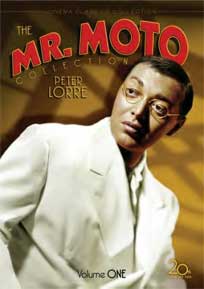 THE
MR. MOTO COLLECTION VOLUME ONE (1937-1938)
THE
MR. MOTO COLLECTION VOLUME ONE (1937-1938)Director: Norman Foster
Fox Home Entertainment
 THE
MR. MOTO COLLECTION VOLUME ONE (1937-1938)
THE
MR. MOTO COLLECTION VOLUME ONE (1937-1938)During the filming
of ALL THROUGH THE NIGHT, director Vincent Sherman asked Peter Lorre “How
he did all those Mr. Moto’s over at Fox?” “I took dope!,”
he replied without hesitation. Later Rudi Fehr, a film editor, confirmed the
fact that Lorre took morphine during the making of the entire series. The real
truth of the matter was Lorre’s health was in crisis during the filming
of most of the Mr. Moto scripts and morphine became a constant necessity not
unlike his fellow countryman Bela Lugosi who received the
drug under medical supervision until they both in time had to secure the drug
without a doctor’s prescription.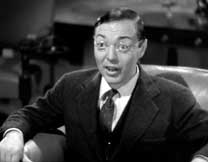
Unlike Warner
Oland’s Charlie Chan who rarely extended himself, his Japanese alter-ego
as played by Peter Lorre, would be a far more rigorous character who must muster
physical strength with judo and gymnastics in solving his cases. Lorre at this
point could not perform such tasks so luckily for all concerned, Harvey Parry,
a master Hollywood stuntman, was enlisted permanently to stunt double as Mr.
Moto at the request of Lorre himself, creating a perfect on screen partnership
for the run of the series.
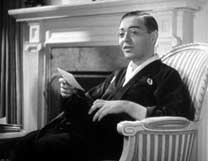 Regardless
of Peter Lorre’s medical worries, the Mr. Moto series (eight in all) are
highly entertaining films from 20th Century Fox and worthy of appraisal in the
same light as the Charlie Chan series also from the Fox lot. "The Mr. Moto
Collection Volume One" contains four of the eight and slightly out of the
order in which they were made: THINK FAST MR. MOTO; THANK YOU, MR. MOTO; MR.
MOTO TAKES A CHANCE and MYSTERIOUS MR. MOTO. These films all clock in at less
than 70 minutes and never let you down as entertainment, making them more than
worthy additions to the detective genre.
Regardless
of Peter Lorre’s medical worries, the Mr. Moto series (eight in all) are
highly entertaining films from 20th Century Fox and worthy of appraisal in the
same light as the Charlie Chan series also from the Fox lot. "The Mr. Moto
Collection Volume One" contains four of the eight and slightly out of the
order in which they were made: THINK FAST MR. MOTO; THANK YOU, MR. MOTO; MR.
MOTO TAKES A CHANCE and MYSTERIOUS MR. MOTO. These films all clock in at less
than 70 minutes and never let you down as entertainment, making them more than
worthy additions to the detective genre.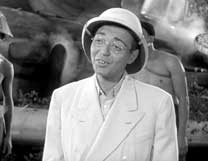
It is a tribute to Peter Lorre’s ability as an actor that he is able to bring a tongue- in-cheek humor in his portrayal of the seemingly mild mannered detective who has no qualms about dealing out death when necessary. John P. Marquand’s Japanese sleuth may have seemed an unlikely fit for the Hungarian actor, however with the aid of glasses, slightly protruding front teeth and his hair combed flat, Peter Lorre inhabited the character like a glove. His identification with Mr. Moto was such that people on the street began to refer to Lorre as Mr. Moto! This I am sure led in time to his dissatisfaction with the role. The end to the series would come soon enough with the Japanese involvement in WWII.
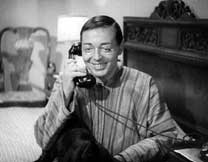 The
first film in the set, THINK FAST MR. MOTO, involves Moto in a smuggling ring
introducing him as the managing director of the Dai Nippon Trading Company,
whose Hobby is that of playing detective. We soon discover that Mr. Moto is
a super detective with a mastery of jujitsu who must pass himself off as a smuggler
to save the day.
The
first film in the set, THINK FAST MR. MOTO, involves Moto in a smuggling ring
introducing him as the managing director of the Dai Nippon Trading Company,
whose Hobby is that of playing detective. We soon discover that Mr. Moto is
a super detective with a mastery of jujitsu who must pass himself off as a smuggler
to save the day.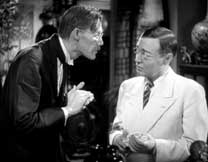
The second film, THANK YOU MR. MOTO, is one of my favorites in the series. It opens magnificently in a raging dust storm as a heavily disguised Mr. Moto examines a priceless scroll in his tent illuminated by a fire, only to be interrupted by a would be assassin, allowing the viewer a glimpse into Moto’s ability to kill without a moment's hesitation and dispose of the body just as quickly. I love the idea of bringing the “Genghis Khan” persona into the film, reminding one a bit of THE MASK OF FU MANCHU which also had a plot involving the tomb of Khan. This entry has a number of murders and lots of action and suspense.
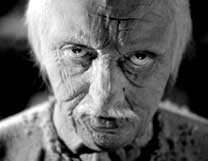 The
third entry in this set is also the campiest of the lot. In MR. MOTO TAKES A
CHANCE, we find Moto in the ancient ruins of Angkor, in Cambodia where he finds
it necessary to impersonate a “guru” complete with white hair and
staff. This film becomes a bit like one of Lugosi’s Chandu films with
poison air guns, trapdoors within temples and angry high priests to boot! A
real melodrama in the serial tradition which came perhaps a bit too soon in
the series to burlesque what veracity the other Moto films had going for them.
The
third entry in this set is also the campiest of the lot. In MR. MOTO TAKES A
CHANCE, we find Moto in the ancient ruins of Angkor, in Cambodia where he finds
it necessary to impersonate a “guru” complete with white hair and
staff. This film becomes a bit like one of Lugosi’s Chandu films with
poison air guns, trapdoors within temples and angry high priests to boot! A
real melodrama in the serial tradition which came perhaps a bit too soon in
the series to burlesque what veracity the other Moto films had going for them.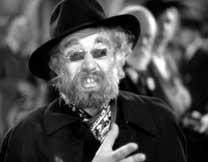
Finally, the last film in the set, MYSTERIOUS MR. MOTO, opens with an escape from Devils Island to London as Moto tracks the members of a vicious League of Assassins out to murder the “Steel King of Prague” for refusing to submit to their demands. This installment reminds one of the Sherlock Holmes series with Scotland Yard and the Limehouse district as backdrop for London bobbies who aid Mr. Moto as he races against time to save a man from being crushed by a mammoth chandelier. By this time, Peter Lorre has made the role entirely his own and he is always a joy to watch.
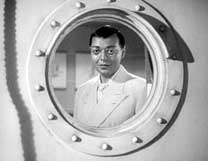 For
those of us that love and admire the films of Peter Lorre, the release of his
work as Mr. Moto is most welcomed. This was a period in Lorre’s career
when he was still young enough to carry a picture even if his health was a bit
shaky during the making of these films. I always remember a photograph taken
around the time of Lorre’s days at Fox where he is shirtless playing tennis
and looking so thin and fit. These were the golden years for Lorre as a working
actor in Hollywood in love with his new wife Kaaren Verne.
For
those of us that love and admire the films of Peter Lorre, the release of his
work as Mr. Moto is most welcomed. This was a period in Lorre’s career
when he was still young enough to carry a picture even if his health was a bit
shaky during the making of these films. I always remember a photograph taken
around the time of Lorre’s days at Fox where he is shirtless playing tennis
and looking so thin and fit. These were the golden years for Lorre as a working
actor in Hollywood in love with his new wife Kaaren Verne.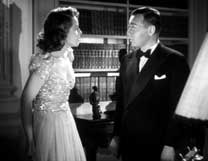
His co-workers always commented on Lorre’s effortless working style, not to mention the string of fine performances he gave at Warner Bros during and after the war. The time would come soon enough when Peter Lorre would just “Make faces” out of boredom and bitterness in the lack of imagination his employers would use in creating roles for him to play. The giant shadow of Lang with the glamour of Berlin, not to mention the excitement of 1930s London with Hitchcock, would always loom like a dark cloud over Lorre’s time in Hollywood. However, the release of this first boxed set of Lorre as the ever resourceful Mr. Moto is a happy reminder of just what a fine character actor he could be and a glimpse at a world that has passed through the sands of time along with our other boyhood heroes such as the Falcon, Sherlock Holmes and Charlie Chan.
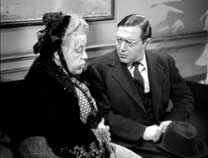 Last
year, Tim Lucas sent all eight of the Mr.Moto films on DVD-R and it was a pleasure
just to be able to see them all again after so many years since they were run
on commercial television in LA. The prints were pretty bad and sound suffered
as well, but hey, I was just glad to have them at all. Now this set makes up
for all the years of waiting and watching bad dupes and bootlegs as these prints
are remarkable, clear and bright with little grain or wear as one comes to expect
from films nearly 70 years old. Overall, these black and white full screen transfers
looks spectacular. The mono audio on all four titles is also very clean. These
look even better than the Chan’s that were released by Fox earlier this
year.
Last
year, Tim Lucas sent all eight of the Mr.Moto films on DVD-R and it was a pleasure
just to be able to see them all again after so many years since they were run
on commercial television in LA. The prints were pretty bad and sound suffered
as well, but hey, I was just glad to have them at all. Now this set makes up
for all the years of waiting and watching bad dupes and bootlegs as these prints
are remarkable, clear and bright with little grain or wear as one comes to expect
from films nearly 70 years old. Overall, these black and white full screen transfers
looks spectacular. The mono audio on all four titles is also very clean. These
look even better than the Chan’s that were released by Fox earlier this
year.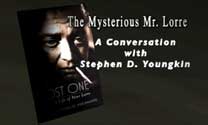
The set contains a restoration comparison to see just how nice these transfers are. Each disc contains a featurette, including one on legendary stuntman Harvey Parry which gives you some insight into his close friendship with Lorre which resulted from working in this series. Audio interview segments with the late Parry are also included here. “Directed by Norman Foster” is a nice little addition to the set explaining the rigors of directing on a “B” unit at Fox. The third featurette is entitled “Sol Wurtzel the Forgotten Mogul” (now we know why!) and lastly, there is a fine featurette on Lorre himself entitled “The Mysterious Mr. Lorre,”a conversation with Lorre biographer Stephen D. Younkin which tries to explain a bit about the actor and the myths that surround him to this day. The same folks that worked so hard on the featurettes on the Chan boxed set have done an equally fine job here. Each disc contains its original trailer, as well as one or two trailers for other titles in the Moto series.
This is one of the DVD highlights of the year as far as I am concerned and a welcomed addition to anyone’s film library, especially anyone who loves Peter Lorre or the detective genre. (David Del Valle)